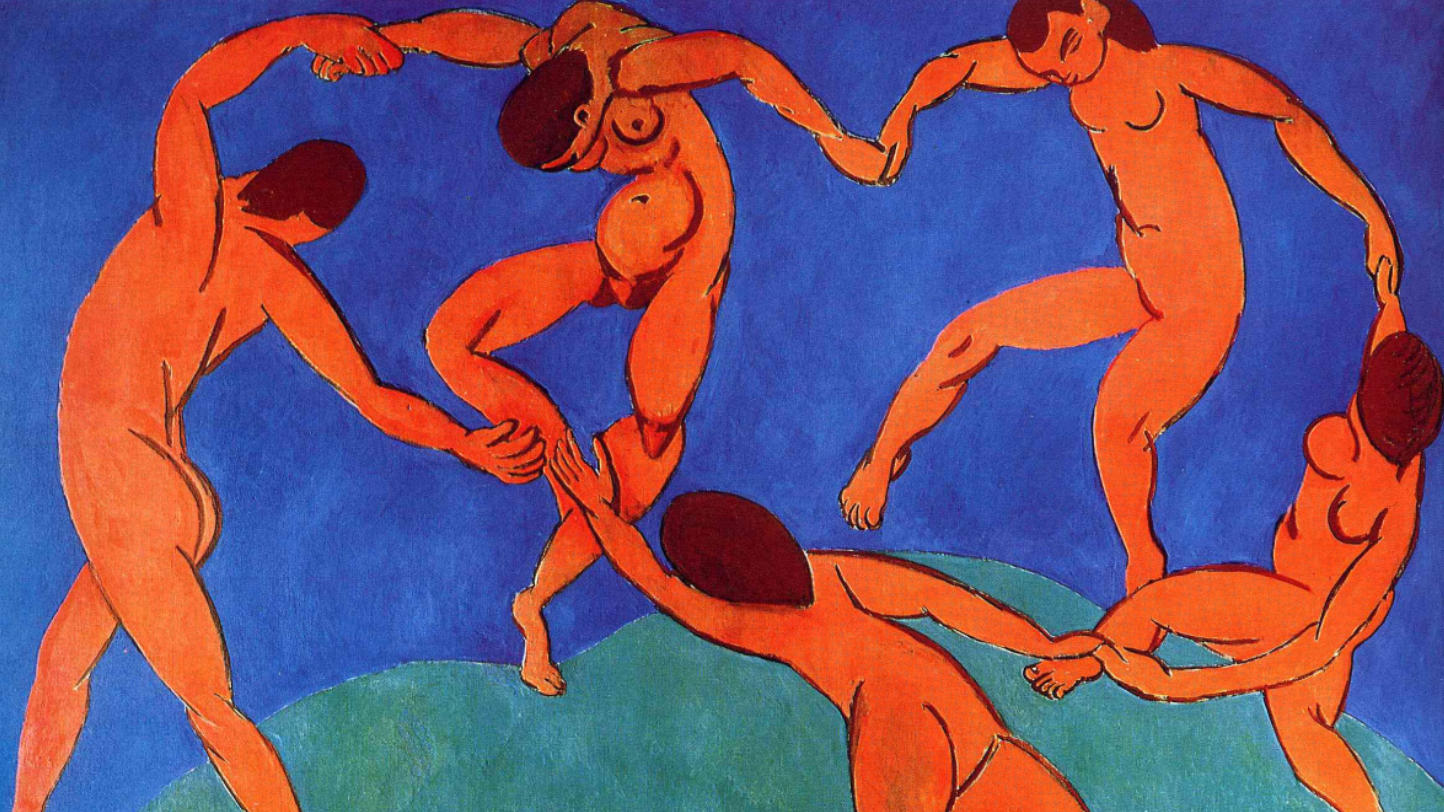
What is Fauvism?
Fauvism is the name given to work produced by a group of artists (which included Henri Matisse and André Derain) circa 1905 to 1910, characterized by bold, pure colors applied aggressively directly from tubes of paint to create a sense of explosion on canvas, fierce brushstrokes. Like the Impressionists, the Fauvists painted directly in nature but the subjects were portrayed in a strong and expressive way.
What is the history of Fauvism?
First formally exhibited in Paris in 1905, the Fauvist paintings shocked visitors to the annual Salon d'Automne. One of these visitors was the critic Louis Vauxcelles, who, due to the violence of the works presented, nicknamed the painters fauves (“wild animals”). The paintings on display by Derain and Matisse were the result of a summer spent working in Collioure, in the south of France. Other artists associated with Fauvism include Georges Braque, Raoul Dufy, Georges Rouault and Maurice de Vlaminck.

Color Theory?
Inspired by the scientific theory of colors developed in the 19th century – particularly those related to complementary colors – the Fauvists created simplified paintings, full of strong colors that complement each other but are not naturalistic. Color theory explains that complementary colors are pairs of colors that appear opposite in scientific models, such as the color wheel, and when used side by side in a painting, make each other appear brighter.
Fauvist artists broke with traditional impressionist methods and experimented with exaggerated colors in an innovative way, composing their paintings based on wild color contrasts. Fauvists preferred to combine complementary colors, such as purple and yellow, magenta and green, or orange and blue. These colors are on opposite sides of the color wheel and were often chosen as the main colors of Fauvist paintings. However, Fauvist artists did not choose colors based on scientific theory as the post-impressionists did, but on feeling, observation and the nature of each chromatic experience. The fauves used color radically, advocating for the liberation of color from realistic representation, attributing emotionally charged meanings to it.
They rejected the optical realism created by impressionism, such as realistic portraits, and did not apply perspective or use light shadow effects. The spontaneous and subjective responses to the subjects in her works were expressed through broken brushstrokes and bright colors, using paint straight from the tube. They thus moved away from urban themes and returned to themes such as countryside landscapes, leisure or portraits. Impulsive lines, spontaneous compositions and a simplified drawing technique are the essential characteristics in Fauve paintings.Influences from earlier movements inspired Matisse and other painters to reject traditional three-dimensional space and use patches of color to create a new pictorial space. It has often been compared to German Expressionism, a movement that emerged around the same time and was also inspired by developments in Post-Impressionism.

Influences: The Fauvism Movement in contemporary times
Fauvism was one of the first avant-garde modernist movements of the 20th century to take steps towards abstraction. This was a transitional movement for artists who adopted a Fauvist approach, with the majority, in the late 1910s, eventually moving away from expressive Fauvism. However, Henri Matisse continued to use Fauve traits throughout his career, from bright emotive colors to simple shapes.
The truth is that the most famous Fauvist pieces of art are predominantly by Matisse. Works such as Bonheur de Vivre and Dance remained iconic and instantly recognizable paintings for combining a mystical and euphoric theme with a distinct plasticity and an enhanced palette.The typical traits of Fauvism have the ability to appear timeless and innovative. Even today, artists continue to use bold colors and decisive brushstrokes to create vibrant works of art. Many of our artists follow the fauvist tradition, modifying elements and applying blocky gestural brushstrokes, saturated colors or a fresh look at perspective.

Most Famous Fauvist Paintings
The most famous Fauvist artworks were created by three of Fauvism's leading exponents: Henri Matisse, André Derain and Maurice de Vlaminck.
The Joy of Life Henri Matisse
Inspired by Cezanne, Henri Matisse began to experiment with color, painting many landscapes during the summers he spent in the south of France. One of them, entitled "The Joy of Life" (1905), which portrays an idyllic and imaginary scene with bright and cheerful colors. A notable element in this painting is the group of dancing figures that resembles a group of figures in one of Matisse's later paintings, The Dance (1909).

Charing Cross Bridge by André Derain
André Derain and Henri Matisse they attended the Carrière Académie and met at that time. The desire to place color as the main element of expression arose when he rented an apartment in Chatou with Maurice de Vlaminck. In 1905, he worked with Matisse at Collioure and arrived at a harmonious representation of the decorative landscape. He began to experiment with color, fusing it into large surfaces surrounded by defined contours. This technique was applied in the painting “Charing Cross Bridge”.

The River Seine at Chatou by Maurice de Vlaminck
Alongside your peers Henri Matisse and André Derain, Maurice de Vlaminck is considered the third leading figure of Fauvism. His innovative approach to landscape, form and color helped to establish him as one of the pioneering artists of his time. From the age of sixteen, he lived in Chatou, a small village, where the painter spent a lot of time with his friends Matisse and Derain. In the summer of 1906, while observing the landscape of the village, he intuitively applied paint, creating The River Seine in Chatou (1906).

